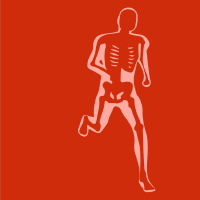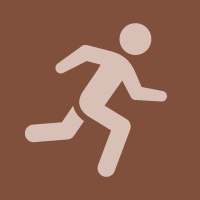Topic Menu
► Topic MenuTopic Editors


Role of Exercise in Musculoskeletal Disorders
Topic Information
Dear Colleagues,
Physical inactivity is the fourth leading cause of morbidity and mortality worldwide. Regular physical activity is highly beneficial for the primary, secondary and tertiary management of many common chronic conditions. There is considerable evidence for the benefits of physical activity for different disease such as cardiovascular disease, diabetes, obesity, some cancers, mental health, dementia and musculoskeletal conditions. For some chronic conditions, structured exercise interventions are at least as effective as drug therapy. The adapted physical activity should be prescribed in the same way as pharmacological treatment, deciding on the “dosage” and “formulation” for each patient. The “dosage” is calculated to reach a specific level of efficacy that prevents or improves symptoms but does not result in toxic effects. The exercise regime should always be "adapted" personalized and "tailored" since the level of exercise will depend on the tolerability of the individual, since the body of each of us always responds differently. No do-it-yourself or generalized training/protocols should be allowed, because physical activity if done poorly, can cause more damage than a sedentary lifestyle. As stated by the American College of Sports Medicine, physical activity should be prescribed/administered, alternatively or in association with drug treatment by the Sports and/or Family Physician and/or the Kinesiologist. An exercise program for patients with musculoskeletal disorders aims to preserve or restore a range of motion of the affected joints, enhancing bone turnover, increase functional joint stability, increase muscle strength and endurance, improve balance, reduce pain, and decrease health risks associated with a sedentary lifestyle. Moreover, physical activity is a good way to socialize and improve mood, and it is an excellent antistress agent. The benefits of exercise on physical limitations and fatigue in musculoskeletal disorders seem to have both short- and long-term effectiveness.
Prof. Dr. Giuseppe Musumeci
Dr. Antonino Bianco
Topic Editors
Keywords
- musculoskeletal disorders
- physical activity
- exercises
- sport medicine
- rehabilitation
- osteoarthritis
- fatigue, pain, and balance
- muscle strength and endurance
- joint stability
- rheumatic diseases
- gait analysis
- biomechanics
- health sciences
- muscle, bone, cartilage, ligament, tendons
- occupational health
- musculoskeletal system
- evidence-based medicine
- neuromuscular control
- prevention
- health promotion
- health technology
- three-dimensional motion analysis
- knee injury
- athletic pubalgia
- paralympic sport
- disability
- regenerative medicine
- mechanobiology
- aging
- functional anatomy
- virtual reality
- sports injury prevention
- epidemiology
- home based exercise
- nerve injury
- nerve regeneration
- therapeutic exercise
- digital epidemiology
- wearable technologies
- multi-directional movement
- novel training environments and digital devices
Participating Journals
| Journal Name | Impact Factor | CiteScore | Launched Year | First Decision (median) | APC |
|---|---|---|---|---|---|

Healthcare
|
2.4 | 3.5 | 2013 | 20.5 Days | CHF 2700 |

International Journal of Molecular Sciences
|
4.9 | 8.1 | 2000 | 18.1 Days | CHF 2900 |

Journal of Functional Morphology and Kinesiology
|
2.6 | 4.2 | 2016 | 18.9 Days | CHF 1600 |

Sports
|
2.2 | 4.1 | 2013 | 20.4 Days | CHF 1800 |

MDPI Topics is cooperating with Preprints.org and has built a direct connection between MDPI journals and Preprints.org. Authors are encouraged to enjoy the benefits by posting a preprint at Preprints.org prior to publication:
- Immediately share your ideas ahead of publication and establish your research priority;
- Protect your idea from being stolen with this time-stamped preprint article;
- Enhance the exposure and impact of your research;
- Receive feedback from your peers in advance;
- Have it indexed in Web of Science (Preprint Citation Index), Google Scholar, Crossref, SHARE, PrePubMed, Scilit and Europe PMC.

